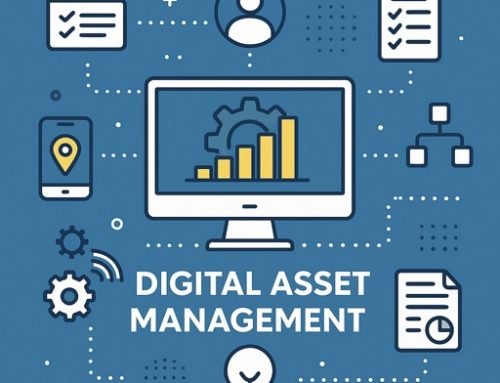Digital transformation in 2025? Start here
Despite a new government and 2025 around the corner, local authorities still face the same problems – tight budgets and increasing service demands.
While the recent £1.3 billion boost in grant funding is a welcome relief, when adjusted for inflation, local authorities today are grappling with an eye-watering £57 billion reduction in spending power compared to pre-2008 levels. In this financial climate, doing more with less is no longer a buzzword – it’s a necessary strategy.
In 2019, the UK government’s “Transforming for a Digital Future” roadmap laid out a vision for faster, more reliable public services, backed by a workforce equipped with modern skills. 6 years later, many local authorities still have a long way to go! If they are ever going to step into the 21st century and start delivering service quality on par with private sector companies, digital transformation of service areas needs to be at the forefront.
Meaningful digital transformation is not just about throwing money at the latest technology trends or trying to overhaul every system overnight. Local authorities need to identify the areas where digital solutions will yield the most significant returns in terms of efficiency, cost savings, and improved service delivery.
Digital transformation in administrative and back-office processes
The everyday operations that keep councils running – payroll, invoicing, procurement, etc – are often bogged down by outdated systems and manual workflows. These inefficiencies sap resources and leave room for human error.
By automating repetitive tasks and streamlining workflows, councils can free up staff to focus on more complex and valuable activities. Automatic invoice processing and self-service resolution of queries are innovations that cut costs and save time, making a tangible difference to overstretched teams.
Digital transformation in customer-facing services
Councils handle a huge volume of enquiries and applications, spanning everything from pothole reports to housing benefits and planning permissions. It goes without saying, but traditional approaches – long phone queues, paper forms, in-person visits, etc – are slow, frustrating, and resource-intensive.
Digital tools like online application platforms, chatbots, and AI-driven customer support can revolutionise the resident experience. They offer 24/7 availability, faster response times, and streamlined processes, all while reducing the workload for council staff.
That said, digital transformation in customer services must be mindful that not everyone is comfortable navigating an online form or chatting with a bot, especially older residents or those with limited digital access. Councils need to ensure that alternative options, like digital kiosks or in-person support hubs, remain available. The goal is to enhance service quality and accessibility, not create new barriers.
Digital transformation in asset management
Councils are responsible for maintaining public assets such as roads, bridges, bins, and housing stock. Historically, this has been a purely reactive process, with repairs carried out only after problems arise.
Digital transformation tools can flip this model on its head. Remote IOT sensors and AI-driven analytics can provide accurate maintenance predictions before they become costly emergencies. Blackpool Council, for example, leverages artificial intelligence to assess road conditions, reducing both compensation payments and maintenance expenses.
Similar approaches can be applied to other council assets, where online systems can streamline repairs, inspections, and tenant communications.
Digital transformation in waste management
Waste management is often overlooked, but this is another area that is ripe for digital transformation.
Systems that optimise bin collection routes using real-time data can cut fuel costs and improve service efficiency. Apps that notify residents about collection schedules or delays are also proving popular, reducing complaints and building trust. These tools might not grab headlines, but their quality-of-life impact for residents cannot be understated.
The bottom line
Digital transformation offers a lifeline for local government in an era of austerity. It is not about replacing people with machines – it is about equipping them with better tools to do their jobs. It is about addressing inefficiencies, saving money, and improving the lives of residents.
Success depends on more than just technology. It requires a cultural shift within local authorities, where staff at all levels embrace accountability, owning their services, and adopting new ways of working. Training and upskilling the workforce is just as important as deploying the latest software. With smart strategies, a clear focus, and a willingness to embrace change, councils can navigate financial challenges.






